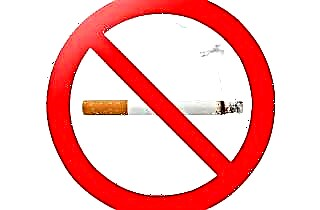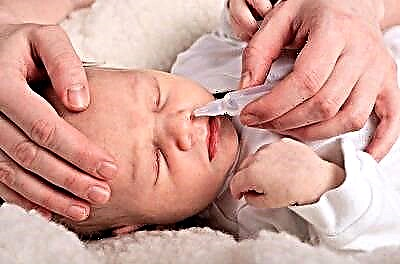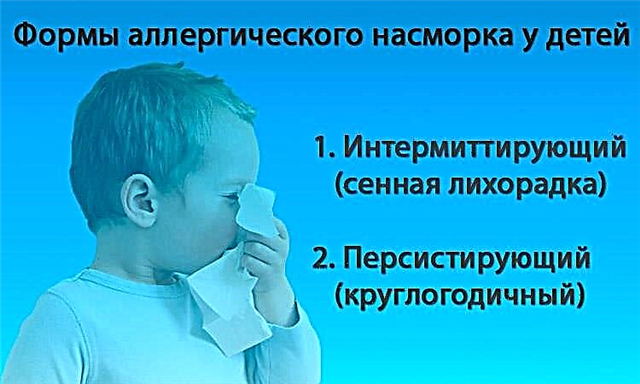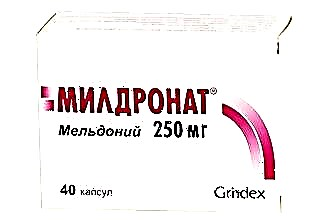Staphylococcus aureus is a conditionally pathogenic bacterium that, with a decrease in immunity, can lead to a number of serious diseases. As long as a person is healthy, staphylococcus is not dangerous for him, and he may not even suspect that he is a carrier of this bacterium. But with an exacerbation of chronic diseases, colds, after injuries and operations, staphylococcus begins to actively manifest itself. Therefore, it is important to know the symptoms of staphylococcus in the nose in order to identify it in time and take measures to quickly eliminate it.
Risk factors
Anyone can become infected with staphylococcus. It is enough to touch the surface on which the bacteria is located with your hands, and then any exposed area of the skin. WITH  It spreads no less easily by airborne droplets. Therefore, it is almost impossible to get rid of this bacteria. She is a permanent resident of food service centers, toilets, hospitals and childcare facilities.
It spreads no less easily by airborne droplets. Therefore, it is almost impossible to get rid of this bacteria. She is a permanent resident of food service centers, toilets, hospitals and childcare facilities.
The risk of contracting an infection is significantly increased when:
- non-compliance with basic hygiene rules;
- weakened immunity;
- vitamin deficiency and an insufficient amount of minerals and trace elements;
- frequent or chronic respiratory problems;
- long-term use of vasoconstrictor nasal drops;
- long experience of smoking;
- unreasonable intake of antibiotics;
- looseness or inflammation of the nasal mucous membranes;
- scratches, trauma and other damage to the skin.
There is a high probability of infection during medical procedures and manipulations with violation of sterility or with dirty hands. Children are especially easily infected with staphylococcus, since their immunity is not yet sufficiently developed to resist bacteria, and the skin and mucous membranes are very delicate and sensitive.
The main symptoms
It is easiest for staphylococcus to be in the nasal cavity. You can bring it there with unwashed hands, just inhale the saliva of a person sneezing or coughing nearby, etc. The mucous lining of the nasal passages is very delicate and constantly moisturized, which creates almost ideal conditions for active  reproduction of bacteria.
reproduction of bacteria.
Staphylococcus aureus usually manifests itself in the nose with the following symptoms:
- redness, inflammation, sometimes swelling of the mucous membrane;
- a slight persistent increase in body temperature;
- increased secretion of mucus from the nose, often purulent rhinitis;
- weakness, dizziness, nausea and other signs of intoxication;
- multiple small pustular rashes on the mucous membrane and skin of the nose.
With damage to the nasopharynx, purulent tonsillitis can develop quite quickly, which will give a sharp rise in temperature, sore throat, and severe cough. When it enters the nasal sinuses, sinusitis, sinusitis, otitis media are connected to the overall picture.
Sometimes the first symptoms of staphylococcus in the nasal cavity are mild and easy to miss. And the disease is detected only when the respiratory symptoms that have arisen for some time do not respond to conventional treatment. This can complicate the situation, since during this time staphylococcus is actively increasing its number and spreading further and further.
Possible complications
The main danger is that staphylococcus aureus is not limited to the internal cavity, having settled in the body and actively developing. It spreads further along the mucous membrane, affects the nasopharynx, larynx and gets to the internal organs. Therefore, in the absence of treatment or the use of the wrong drugs, very serious complications can arise:
- Gastrointestinal Disorders. They are accompanied by loose stools (leading to dysbiosis and dehydration), complete lack of appetite, frequent vomiting, constant nausea, often severe pain in the abdomen.
 Skin diseases: inflammation of the hair follicles, dermatitis, eczema. Purulent acne, boils, carbuncles appear on the affected skin areas, and not singly, but in whole groups.
Skin diseases: inflammation of the hair follicles, dermatitis, eczema. Purulent acne, boils, carbuncles appear on the affected skin areas, and not singly, but in whole groups.- Pneumonia. Fortunately, it rarely develops, more often in babies or adults who are weakened after surgery or previously suffered serious illnesses. If not noticed on time, purulent pneumonia and obstructive syndrome are possible.
- ENT diseases. The ingress of staphylococcus into the nasal sinuses or the Eustachian tube can provoke purulent sinusitis, frontal sinusitis, chronic rhinitis, otitis media. At the same time, there is severe inflammation and swelling of the nasal mucosa.
- Staphylococcal endocarditis. Serious heart disease that can lead to very severe heart and brain damage and even death.
- Ritter's disease. These complications are also more common in children, as their skin is softer and thinner, and is easily attacked by bacteria. The disease manifests itself in the appearance of clearly defined red spots on the body.
- Toxic shock. It occurs only in patients with severely weakened immunity due to poisoning of the whole body by toxins produced by staphylococcus. It looks like a very strong poisoning: a sharp rise in temperature, severe vomiting, weakness, loss of consciousness, a drop in blood pressure.
It is much more difficult to cure such complications than to neutralize staphylococcus aureus at an early stage. The situation is aggravated by the fact that serious lesions of internal organs and strong inflammatory processes reduce immunity, and this, in turn, contributes to the further multiplication of staphylococci.
Therefore, if there is even a suspicion of the presence of this bacterium in the body, it is necessary to immediately pass tests and begin active treatment.
Diagnostic methods
Staphylococcus aureus is not a diagnosis that can be made "by eye". The only way to detect it is a laboratory study of the mucus from the nose taken for analysis. The sample is placed under sterile conditions in a clean culture medium where ideal conditions for unhindered  reproduction. This test is called bacterial culture.
reproduction. This test is called bacterial culture.
After about a day, the sample is carefully examined under a microscope, and a specialist can determine: the type of staphylococcus, the growth rate of the colony, the degree of damage, and also check this strain for resistance to various antibacterial drugs. Based on this analysis, the doctor will choose the most effective treatment.
Unfortunately, quite often staphylococcus in the nose does not show typical symptoms for itself, but it still affects the internal organs and provokes the development of diseases. It can be detected in this case only by chance or when the concomitant disease does not respond to treatment for a long time, and the doctor decides to check the patient for staphylococcus aureus.
In some cases, a blood test helps to identify staphylococcus aureus, in which a certain type of antibodies can be detected. It is possible to suspect its presence if a general blood test indicates a strongly reduced immunity, and purulent rashes periodically appear on the skin and nose.
Treatment methods
There are two main ways of treating staphylococcus - a course of antibiotic therapy or staphylococcal bacteriophage. Which of them is most effective in this case, can only be decided by a doctor based on the results of the examination. Antibiotics can cause an allergic reaction and have a number of contraindications, but they are guaranteed to cope with the bacteria.
 Staphylococcal bacteriophage is essentially a temporary vaccination against staphylococcus. It is a liquid in which microorganisms hostile to bacteria are present. They destroy pathogenic bacteria while killing themselves.There are no contraindications to this remedy. But it can aggravate the symptoms of general intoxication for a while.
Staphylococcal bacteriophage is essentially a temporary vaccination against staphylococcus. It is a liquid in which microorganisms hostile to bacteria are present. They destroy pathogenic bacteria while killing themselves.There are no contraindications to this remedy. But it can aggravate the symptoms of general intoxication for a while.
At the same time, funds are taken to strengthen the immune system. It can be plant extracts: echinacea, eleutherococcus, ginseng or special preparations: Immunal, Immuneks, etc. Avitaminosis can significantly slow down the healing process, so it is advisable to drink a good multivitamin complex at the same time.
With the external manifestations of staphylococcus, it is also necessary to fight in order to prevent its spread to other areas of the skin and mucous membranes. It is insensitive to alcohol solutions and hydrogen peroxide. But chlorophyllipt does an excellent job with it, both on an oil and an alcohol basis.
The second worst enemy of staphylococcus is the usual brilliant green, with which the affected areas should be lubricated 2-3 times a day. It quickly dries up the pustules and prevents the disease from moving on.
It is very important to complete the treatment to the end. This means that the doctor's prescriptions must be followed until a second analysis shows that the problem is completely eliminated. Otherwise, the remaining microorganisms will adapt to the drugs used and stop responding to them. And with the next exacerbation, it will be much more difficult to deal with them.
Preventive measures
 No prevention will give a full guarantee that you will not get infected with one of the types of staphylococcus. As already mentioned, this bacterium is very tenacious, and creating conditions close to sterile in ordinary life is simply unrealistic, and unnecessary, since many beneficial microorganisms also live on our skin and mucous membranes.
No prevention will give a full guarantee that you will not get infected with one of the types of staphylococcus. As already mentioned, this bacterium is very tenacious, and creating conditions close to sterile in ordinary life is simply unrealistic, and unnecessary, since many beneficial microorganisms also live on our skin and mucous membranes.
Therefore, preventive measures should be aimed primarily not at avoiding infection, but at strengthening the body and enabling it to independently restrain the reproduction of pathogenic microflora. This means that all forces must be directed to:
- Strengthening the immune system. Of course, not in the stage of exacerbation of staphylococcus or chronic diseases. An active lifestyle, sports, hardening procedures, a contrast shower, and swimming will help in this.
- Healing from chronic diseases. Any chronic disease greatly weakens the body's immune defenses, which means that any infection is easier to harm the body. Therefore, not only staphylococcus can provoke a chronic disease, but the disease can create conditions for the reproduction of staphylococcus.
- Correct use of household chemicals. Now many people are addicted to potent household chemicals. Of course, they greatly facilitate the process of cleaning the room, but at the same time they kill not only pathogens, but also beneficial microorganisms, weakening the natural defenses of the skin. Therefore, it is necessary to work with them with gloves and use them sparingly.
- Compliance with the rules of hygiene. You should always wash your hands before eating and after using the toilet, not just in public places. It is advisable to always have antibacterial wet wipes or a pocket bottle of antiseptic with you and apply them if necessary.
- Proper storage and handling of food. Staphylococcus from the surface of unwashed vegetables and fruits can get not only into the stomach, but also end up first on the hands, and then in the nose, mouth, throat. Therefore, in the hot season, it is advisable not only to wash them, but also to pour over them with boiling water, in which the bacteria dies instantly.
 Timely visit to a doctor. It is necessary to seek medical help as soon as you have discovered signs in yourself that allow you to suspect the presence of pathogenic bacteria, and not when you have already tried to treat them yourself and failed. As a last resort, immediately tell the doctor how you acted so that he understands which of the treatment methods will no longer be effective.
Timely visit to a doctor. It is necessary to seek medical help as soon as you have discovered signs in yourself that allow you to suspect the presence of pathogenic bacteria, and not when you have already tried to treat them yourself and failed. As a last resort, immediately tell the doctor how you acted so that he understands which of the treatment methods will no longer be effective.- Rejection of bad habits. Smoking tobacco, alcohol abuse, and the use of narcotic drugs systematically poison the body and weaken the immune system. And smoking also loosens and thinns the mucous membranes of the nose, facilitating the penetration of pathogens.
Remember that staphylococcus aureus in the nose lives in 9 out of 10 adults. This is just a conditionally pathogenic bacterium, which is simply not able to do much harm to a healthy person. Therefore, a healthy lifestyle and strong immunity are the best protection against staphylococcus aureus and the complications it causes.

 Skin diseases: inflammation of the hair follicles, dermatitis, eczema. Purulent acne, boils, carbuncles appear on the affected skin areas, and not singly, but in whole groups.
Skin diseases: inflammation of the hair follicles, dermatitis, eczema. Purulent acne, boils, carbuncles appear on the affected skin areas, and not singly, but in whole groups. Timely visit to a doctor. It is necessary to seek medical help as soon as you have discovered signs in yourself that allow you to suspect the presence of pathogenic bacteria, and not when you have already tried to treat them yourself and failed. As a last resort, immediately tell the doctor how you acted so that he understands which of the treatment methods will no longer be effective.
Timely visit to a doctor. It is necessary to seek medical help as soon as you have discovered signs in yourself that allow you to suspect the presence of pathogenic bacteria, and not when you have already tried to treat them yourself and failed. As a last resort, immediately tell the doctor how you acted so that he understands which of the treatment methods will no longer be effective.

